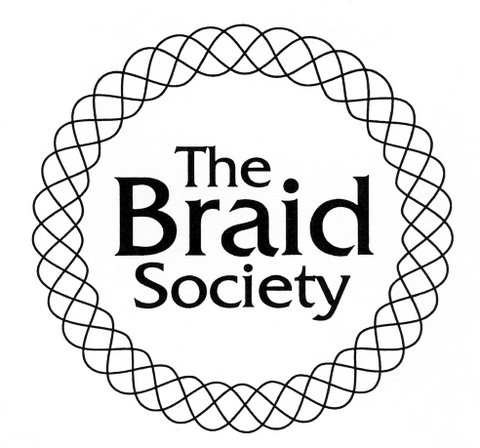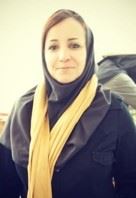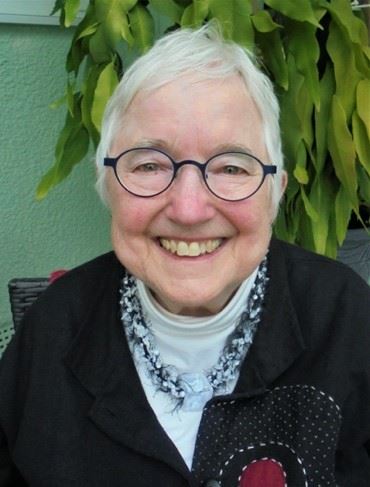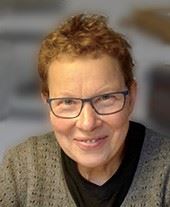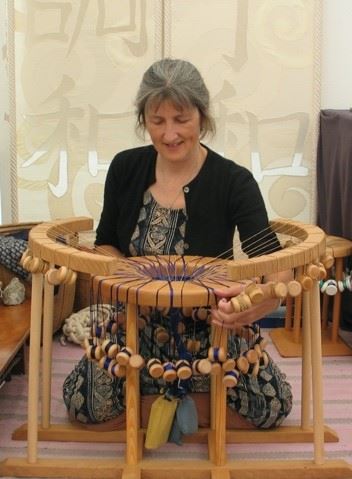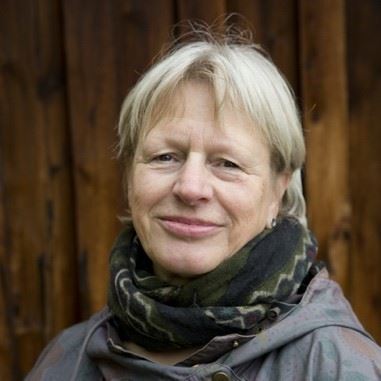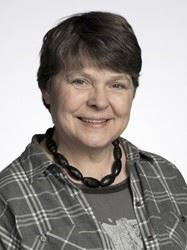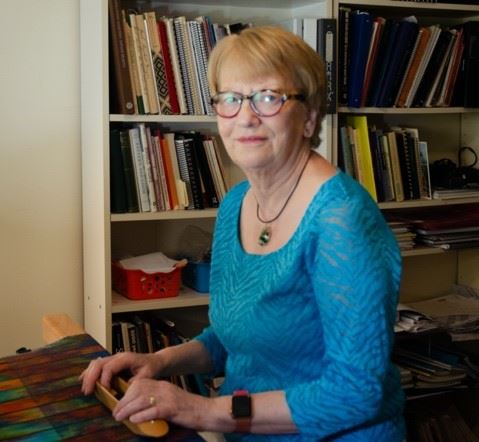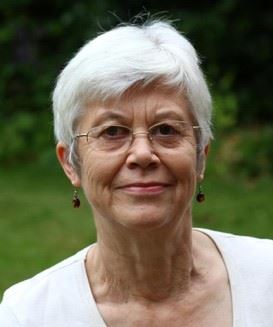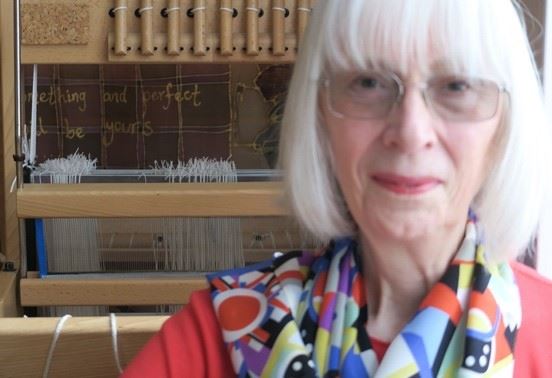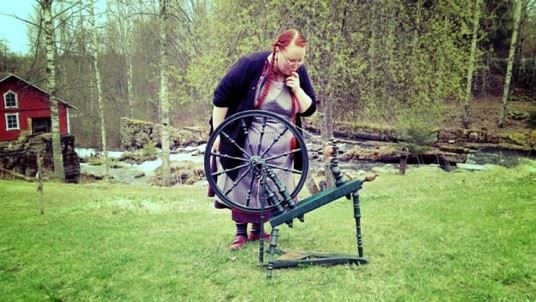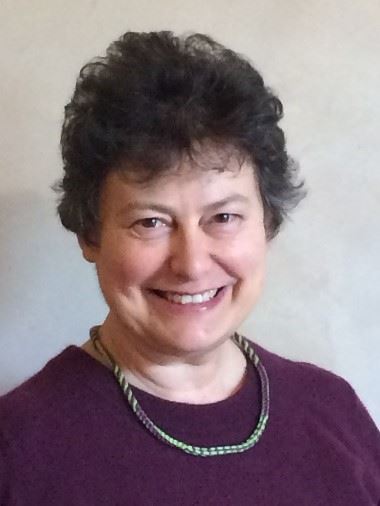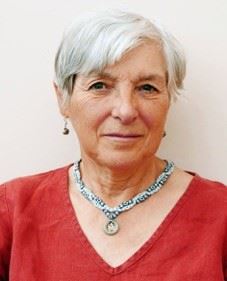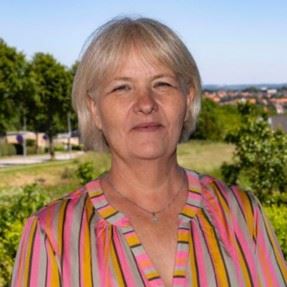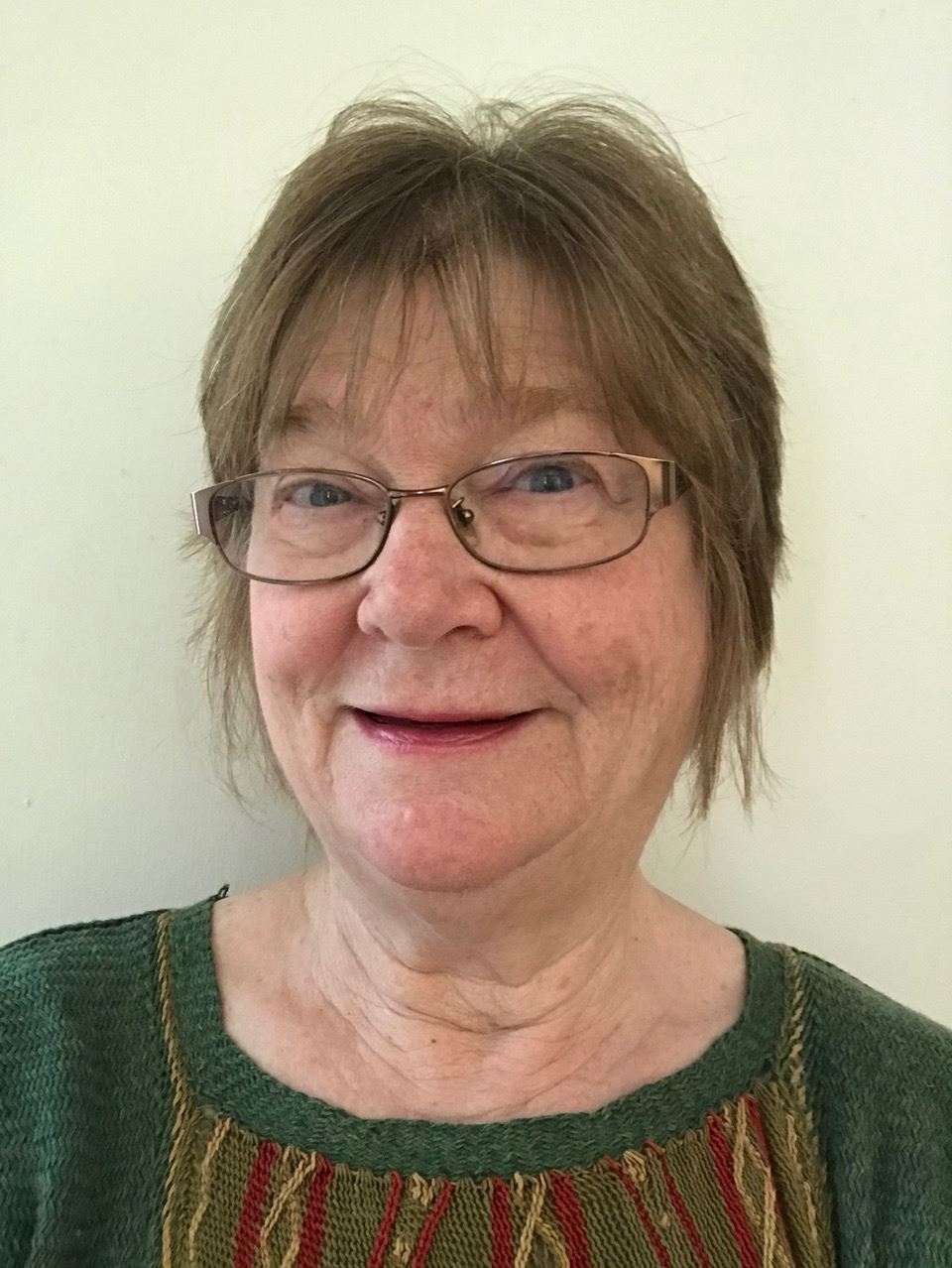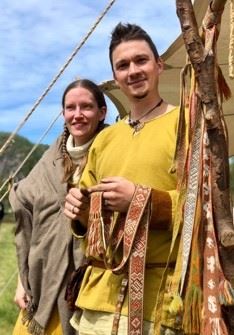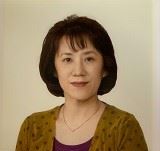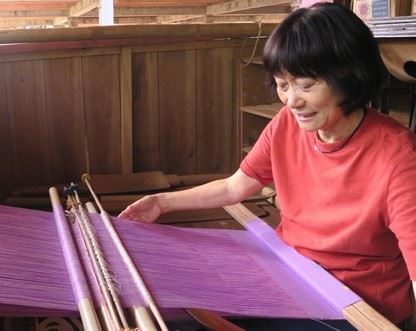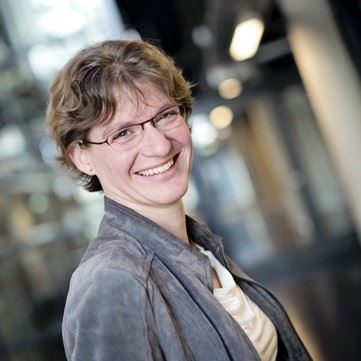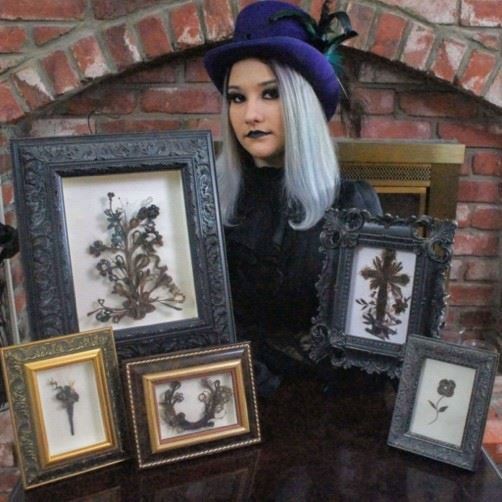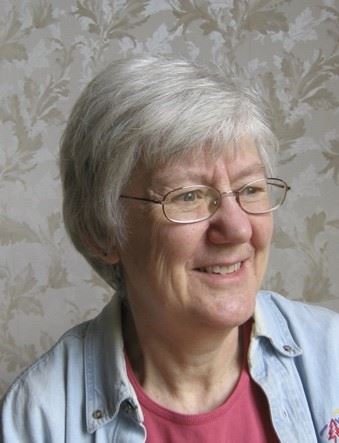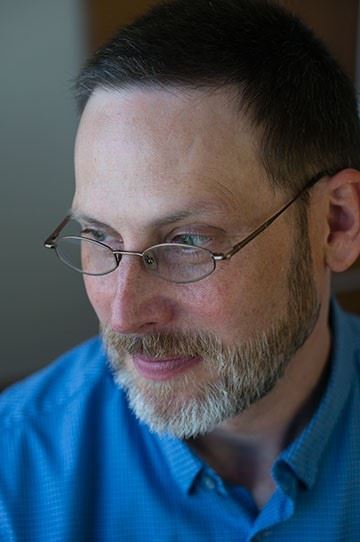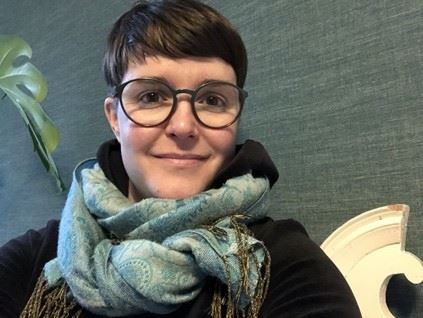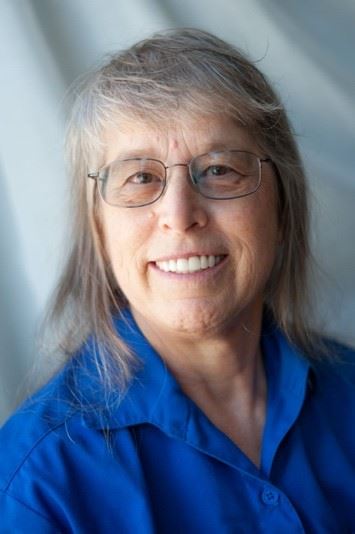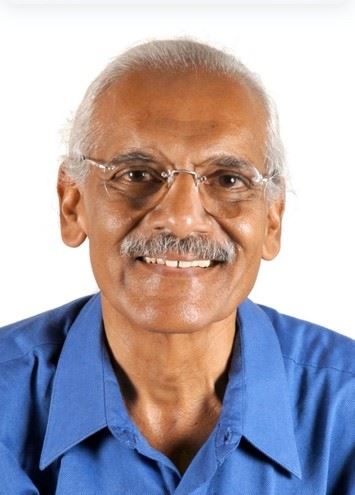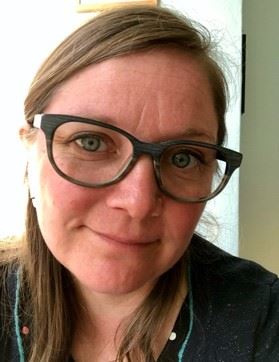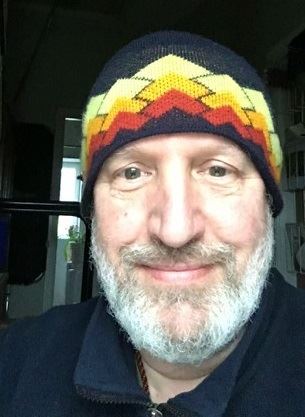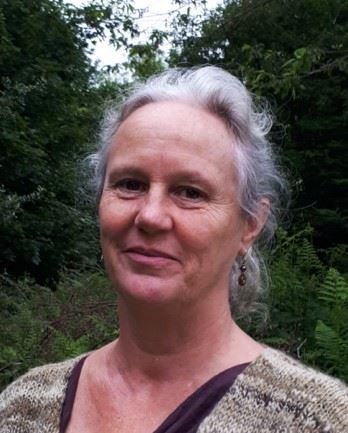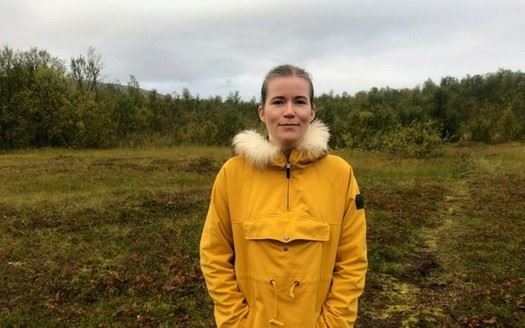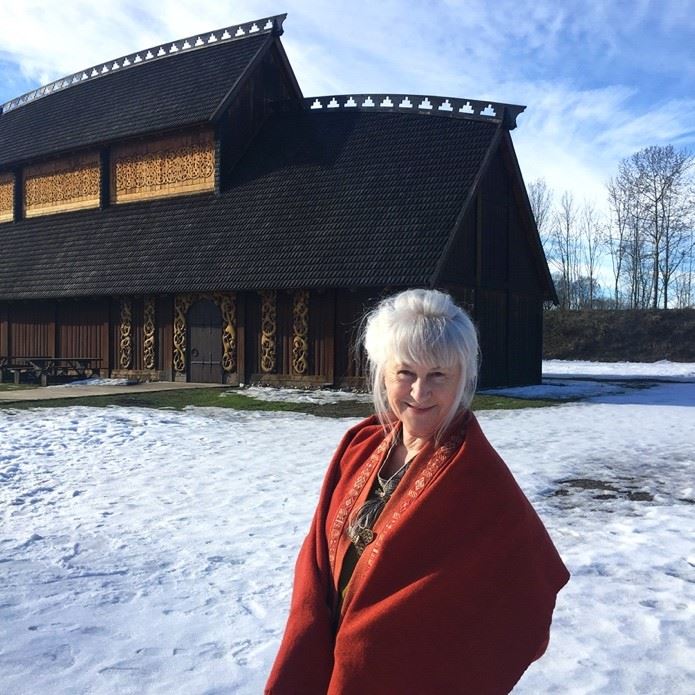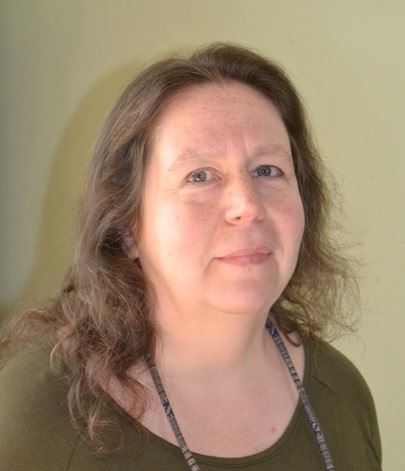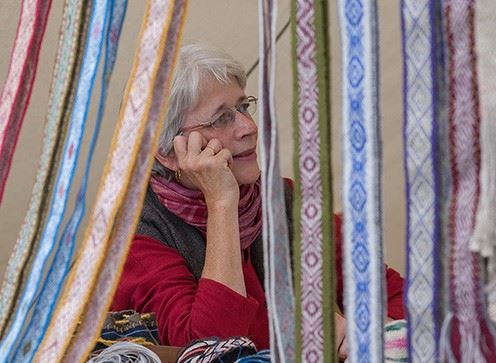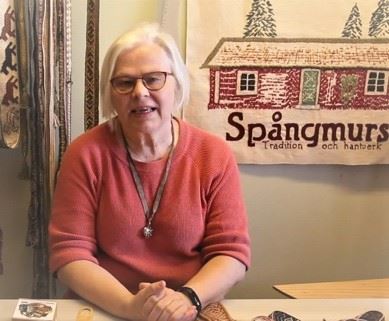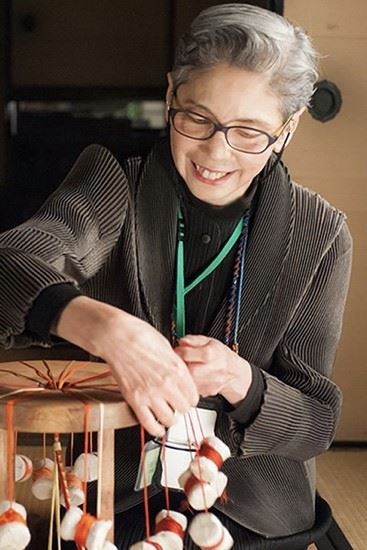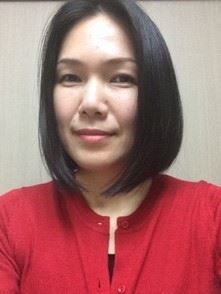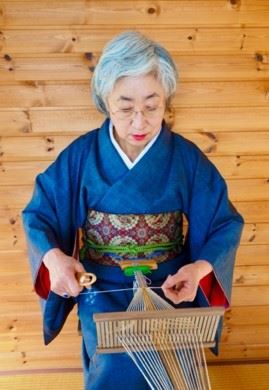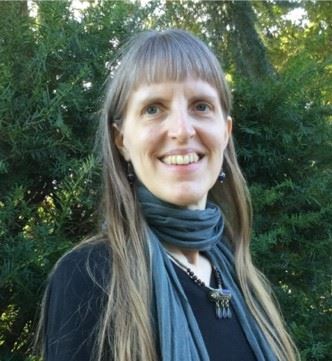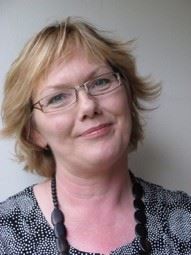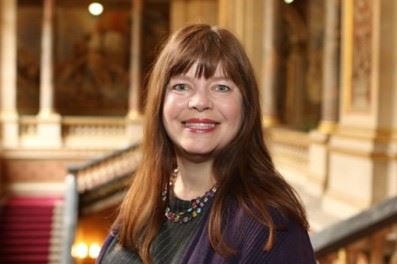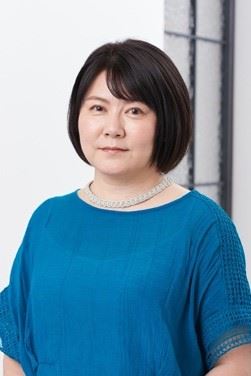| Members can log in by clicking on icon to the right |
|
Nordic and world braids and bands 2022
Tutors
Shahla became interested in traditional band weaving techniques while writing her B.A thesis. It was about traditional narrow weaving especially tablet weaving among Iranian nomads. She has since been researching and practicing various Iranian band weaving techniques. Tehran art university lecturer (textile design & printing department) from 2001; Semnan art university (textile design & printing department) from 2011; Adviser on academic thesis on loom and non-loom weaving from 2001. Articles: “Tablet weaving,”HONAR NAMEH, The quarterly journal of arts research. University of Tehran, Iran. Vol. 5, No. 15, 2005. “Iranian decorative woven strips." GOLESTAN-H-HONAR, Biannual on the history of Iranian art, No 2. Autumn-Winter, 2005. “Bakhtiari Tablet Weaving” in TWIST (Tablet Weavers International Studies & Techniques), Volume XII, Issue 2, Summer 2005.“Pattern in bakhtiari tablet weaving” in TWIST, Vol. XIII, Issue 2, Summer 2006. Lectures and exhibitions in 2006 at Stadt Museum, Bietigheim-Bissingen, Germany and 2009 2nd ASEAN traditional textile symposium, Manila, Philippines. Solo and group exhibitions 2006, 2007, 2009, 2017, 2018, 2019, 2020. Winning awards: 2016: Second degree and excellence of art in traditional textile weaving from Ministry of Culture and Islamic Guidance. 2017: Two awards of excellence for handicrafts national programme. 2018: First prize and honor diploma of 3rd Fajr Annual Handicraft and Traditional Art Ceremony. Class 2D5 - Iranian Band Weaving Shahla_amini41@yahoo.com; Facebook: Shahla amini; Instagram: shala_weavings |
Shirley loves to teach kumihimo and other narrow wares workshops. She is particularly interested in basic kumihimo and its myriad variations: texture, thick and thin, distortion, adding bumps or beads, beginnings and endings. With time, she has come to appreciate that the foam disc has more possibilities than she first thought. Shirley has been braiding since the 1980’s and is a founding member of both the Braid Society and the American Kumihimo Society. At BerlinBraids she and Peter make marudais and tama in Canada. She can answer the question “That’s nice, dear, but what do you do with it?” Class 1D2 - Beginnings and Endings berlinbraids@aol.com; www.shirleyberlin.com |
Joy Boutrup is a textile engineer and associate professor emerita in textile chemistry, dyeing and finishing. She has been teaching materials and textile technology at the Danish design school in Copenhagen and Kolding for more than 30 years. She also teaches extensively overseas in Scandinavia, USA, Canada, Australia, Japan etc. She has been interested in braiding since childhood and the books of Noémi Speiser gave new life to this. Since then loop braiding in particular has been her main spare time occupation. Her interests concentrate on the technology history of braiding, comparing different braiding instructions, their interpretation, and study of actual braids in different collections. Class 2D6 - Loop braiding |
Jacqui is a maker, teacher, author and researcher of braids, having specialized in the subject since graduating from a BA(Hons) degree in woven textiles in 1985. Her work as a practicing craftsperson is known worldwide, and her knowledge shared through teaching and numerous publications. In the early 90’s, Jacqui helped establish the Braid Society, and organized their first exhibition entitled ”Samurai Undressed”, based on her research into the historical development of Japanese braids. In 2020, she updated the exhibition’s original monograph, presenting new research and revealing the process of analysis in her book Samurai Redressed. In 2005, Jacqui was awarded the Queen Elizabeth Scholarship to help further her study, and in 2008 she was awarded a distinction for her MA in the History of Textile & Dress, at the Textile Conservation Centre, University of Southampton. Jacqui’s interest in analyzing structure and ‘reading’ textiles has widened her scope beyond the world of braids. She is now also recognised for her groundbreaking discoveries within English historical embroidery. Her ongoing research work has resulted in various publications, including MS.8932: A medieval embroidered folded almanac, the outcome of a Wellcome Trust bursary to study their unique artefact. Class 2D1 - Kute-uchi jacqui@careycompany.com; www.careycompany.com |
I heard about the sprang technique as a student in cultural history in 1975, and the technique has followed me since then. Finding a way to learn the technique, what products to make that would fit in a modern style, and to find somebody who shares my interest in this rather forgotten technique has been an ongoing process all these years. I started with making lace in the old style that had a long tradition in certain areas in Norway. I used the lace in various decorative objects. In my master thesis, I tried to find out why some textile techniques seem to be almost invisible in museums and the cultural heritage in general. Making small products for sale at markets and testing out several kinds of design in small scale, holes and z-s twist, and combination of colors is what I mostly do. I teach the sprang technique when I get the chance, mostly for groups of specially dedicated handworkers. Teaching the technique is a good way of enlarging my sprang network as well. Class 2D2 - Sprang |
I have been working with textile craft ever since I was quite young. I learned to knit at six years old, before going to school. The different Faroese braids and bands I have learned from my mother, and one of my aunts. At seventeen, I joined my first weaving course. A course in spinning and plant dyeing followed. My interest in textiles led to an education as a textile designer, and now I work at the University of the Faroe Islands teaching textile craft, and creative teaching and learning strategies. Traditional Faroese textile techniques are part of the curriculum. These days I also assist at the National Museum, with specialized knowledge of Viking textiles, another interest of mine. Class 1D12 - Faroe Island Bands Taster T1 - Faroe Island Fingerweaving garters |
In 1992 I became a Master Weaver from OHS. My In-Depth Study was on Iron Age Textiles from Northern Europe (500 B.C. – A.D. 800). Through my study I became interested in tablet weaving because several pieces of textiles with tablet woven borders have been found in Northern Europe dated to the Iron Age. From the knowledge I gained through my study and with several years of weaving, combining tablet weaving with loom weaving, I published a book in 2013 Tablet-Woven Accents for Designer Fabrics: Contemporary Uses for Ancient Technique. I have taught workshops in the US, Canada, England, Japan, and taught for Convergence and Complex Weavers. I have won many awards for my work and my work has appeared in several publications. I weave on a 32-shaft dobby loom. Sometimes, I find inspiration for my work in nature but most often I find inspiration from working with many different colours and combining them with complex weave structures. Class 2D4 - Tablet weaving for beginners Ingedam08@gmail.com; http://ingedam.net; facebook.com/inge.dam1 |
I learned to knit and crochet as a child and have since become fascinated by all forms of constructed textile techniques. My particular interest is in 16th and 17th century bobbin lace when the open-work fabric we know as lace was evolving from the earlier passementerie techniques for making flat, coloured braids. My interest in embroidered buttons came from seeing examples alongside the early linen laces. Taster T2 - Yorkshire Buttons Gildye6@gmail.com www.gilslacemiscellany.com
|
I am an enthusiastic weaver with a particular interest in researching narrow bands. I have run a number of online workshops for the Braid Society and at the International Conferences in Tacoma, USA and Iga, Japan. After self-publishing five books about band weaving with blurb.com, in 2018 Schiffer published my book Weaving Narrow Bands: how to create and design with 5, 7 and 9 pattern threads. There are over 20 YouTube videos on my channel. https://www.youtube.com/user/durhamsilkweaver. There will also be a YouTube video of the weaving technique for you to view at leisure. In addition to the Braid Society and my local Durham Guild of Spinners, Weavers and Dyers, I am a member of the Textile Society of America, Complex Weavers, the Textile Society UK, the Costume Society and the Folklore Society. I am registered on https://www.academia.edu/ and https://www.researchgate.net/. I completed my MA in Art History in 2020 which has given me a new insight into how textiles are represented in art. I have written over 16 articles for craft and academic publications. I am currently researching the history of the technology of weaving narrow bands, Egyptian textiles and undertaking further research into the amazing woven bands in northern Europe. Class 1D21 - Weaving a Sámi Belt with a Sigga heddle Taster T3 - Cord from a disk https://durhamweaver64.blogspot.com; https://www.facebook.com/sue.foulkes.5 |
I learned how to crochet at the age of three from my grandmother. And have been fascinated by yarn ever after. Spinning, knitting, weaving bands, netting, braiding, you name it, all interest me. I concentrated on nålbinding all through my academic studies and wrote my master’s thesis in European ethnology on the recent rise in nålbinding hobbyist in Finland. I’ve been teaching textile techniques for 15 years and find to my joy that they still interest me and my students. Along with teaching the techniques, I love to talk about the cultural and historical background of the subject at hand. Class 1D10 - Nålbinding Taster T4 - Nålbinding |
Kay was taught to sew, knit, crochet and embroider by her mother, aunts and grandmothers from an early age and has been dabbling in a range of textile crafts all her life. She discovered braiding at a Braid Society Try Braiding Day at Westhope College in June 2014 and has been hooked ever since. She has attended workshops by many of the leading practitioners on various braiding techniques, including Kumihimo on marudai, ayatakadai, karakumidai and foam disk, ply-splitting, tablet weaving, inkle weaving, backstrap weaving (Sami, Japanese and South American techniques), finger loop braiding and lucetting, and has enjoyed them all. As well as learning and improving her own braiding techniques, Kay has not forgotten what it feels like to be a beginner and she particularly enjoys teaching braiding to newcomers. She has taught Kumihimo at twelve Try Braiding Days and via Zoom to a group of children in her street during lockdown. You are never too young to start braiding! Kay has been a member of The Braid Society since 2014 and a member of Council since 2015. She is currently the Chair of The Braid Society. Taster - T15 Introduction to kumihimo on a marudai - Workshop Cancelled |
Julie is an experienced weaver, braidmaker and teacher who worked in the Textiles Department at the Surrey Institute, Farnham, UK until 2000. Since 1991, she has been researching the technique of Ply-Split Braiding, used traditionally for animal harnesses in India, costume decoration in Macedonia and carrying straps (Namlo) in Nepal. Julie has been developing ply-splitting methods to make wearable and sculptural pieces in a variety of yarn and the importance of yarn selection and use of colour in relation to structure is vital to her work. In 2006 Julie published ‘Ply-Split Braiding, an Introduction’, followed by ‘Ply-Split Braiding, Further Techniques’ in 2011, Ply-Splitting in 3 Dimensions in 2013 and Ply-Split Braided Jewellery in 2016. She has contributed several articles to the Braid Society Journal, Strands and the Proceedings of the Braiding conferences in Manchester 2012, Seattle 2016 and Iga, 2019. Julie teaches workshops in Ply-Splitting to groups throughout the UK and has taught at five Weavers Guild Summer Schools in UK. She has also taught in India, USA, Italy and Japan. Julie has exhibited and sold her work in the UK, Europe & USA & also works to commission. She is a founder member of The Braid Society and over the years has been, President, Chair and Editor of Strands. Class - 1D3 Sarakatsani Ply Split Braiding Class - 1D26 Ply-Split braiding in POT and SCOT to make a small dish Juliehedges49@gmail.com; www.juliehedges.co.uk |
I’ve taught students, children, adults and textile education at museums, schools, and the like for about 37 years. I’ve had my own company for many years, supplying fabrics and bespoke costume for reenactors, theaters, television, and historical markets. Today I’m employed at the Royal Collections at Koldinghus Castle, where I teach awareness and history of textile crafts and skills. I received my university degree in Didactic Material Culture from Århus University. Class - 1D11 Whipcording Taster T5 Whipcording - Workshop Cancelled info@historicum.dk; www.historicum.dk |
Carol James has been exploring low-tech textile methods for 30 years. She has examined sprang items in collections across the US and Europe. She developed a system to chart sprang patterns and these charts have allowed her to successfully replicate a number of historic textiles. She has also created modern garments deemed worthy of the Handweavers Guild of America fashion show. Carol has taught in Canada, the US, Europe, and New Zealand. Students describe her as patient, knowledgeable, and passionate. She spent her COVID time writing instruction sheets and charting sprang lace designs, including the lace designs in a collection of Dutch Sashes as well as many sprang lace pieces from the Brussels Art and History Museum collection. She is the author of numerous articles, 4 books, and 2 instructional DVDs. Class 2D10 - Sprang Lace carol@sashweaver.ca; SprangLady.com |
I am an autodidact tablet weaver from Denmark. Originating from the living history and reenactment lifestyle I have developed an interest in ancient crafts and reconstruction of archeological artefacts. Particularly tablet weaving from the Scandinavian migration period and Viking age. The small remains in the earth open a window to a past that is filled with bright colors and intricate patterns, a window we can open a bit more through our crafts. Class 2D8 - Tablet-woven Iron Age and Viking bands Rastwijor@gmail.com; Facebook: Håndværksgruppen Roulf |
Katoko graduated from Joshibi University of Art and Design. Presided over by Studio KATOKO. Edogawadai Prefectural University: Former part-time lecturer (2008-2018). Many solo and group exhibitions and workshops. I have been working on PLY-split braiding for over 20 years Class 1D5 - Ply-split brooch and necklace Taster T6 - Ply-split bracelet Kaco8739gmail.com ; Facebook: katoko kitade北出香都子; Instagram: katoko kitade 北出香都子 |
Keiko Kusakabe is a textile scholar and a leader of Toraja Textile Arts. 2010-2021 Graduate Study of social anthropology at Tokyo Metropolitan University. 2000-2010 Field research, study, and collection of Indonesian textiles. 2019 Workshop and lecture: Tokyo Spinning Party, 2017 Workshop: Textile Museum Jakarta. 2012 Workshop & lecture: National Museum of Ethnology, Japan. 2006 Exhibition: Genealogy of Sacred Cloth-Textiles from Sulawesi, Indonesia-Kusakabe Collection at Fukuoka Art Museum. Publications: articles about Toraja-Mamasa tablet-weaving in Fall 2002, Spring 2003, Fall 2003 and Spring 2004 issues of TWIST. “Sa’dan-Toraja and Mamasa Ritualistic Textiles” in the catalogue at the exhibition of her private collection in 2006. Tablet-weaving experience: During her research in 2000, Keiko encountered the traditional tablet weaving in Mamasa, Sulawesi and has since learned Mamasa tablet-weaving there. Mamasa weavers use rectangular tablets, flipping relevant ones in horizontal directions to produce specific Mamasa patterns. Incidentally, the local technique is coincident to the idea created by the late Peter Collingwood (p.61 The Technique of Tablet Weaving). He named this technique “Mamasa Method”. Keiko also visited Europe to learn other techniques in Sweden under Sonja Berlin Englund and in Holland Marijke van Epen. Class 1D14 - Sulawesi tablet weaving kei-torajatex@nifty.com; Http://torajatextilearts.world.coocan.jp/; FB: Keiko Kusakabe
|
About six years ago I started weaving on an inkle loom, when my partner encouraged me to find a “hobby”. My first project was a plain weave band on an inkle loom to make a shoulder strap for my mochila bag. Already during weaving this very first band, I discovered that weaving was the hobby I was looking for. I followed several intensives courses by Marijke van Epen and Teatske Stouten and some workshops by Annelies Tijman and at the “Banden van de Andes Kring”. I specialized in narrow band weaving, both heddle-woven (inkle loom and backstrap) and tablet weaving. Since 2017 I have been writing a Dutch blog and since 2021 an English blog as well, with the main goal to distribute the knowledge about all these fascinating techniques. For the past three years I have been teaching workshops myself, both in person and online self-paced courses. Class 1D8 - Crossed-warp inkle technique Marieke.kranenburg@kpnmail.nl; Inkleweavingpages.com / bandweefblog.nl |
Courtney Lane is a Victorian Hair Artist and Historian committed to educating the public and preserving the nearly lost art of Sentimental Hairwork. She makes bespoke, contemporary hair art for clients through her company, Never Forgotten and can be found delving into the weird and wonderful world of Mourning Victoriana and other hairy history on her YouTube channel, Hair and Now. Considered to be one of the world’s leading authorities on hairwork, her expertise has been featured at such venues as The Death and The Maiden Conference (University of Winchester), Woven Strands: The Art of Human Hair Work (The Mütter Museum), and the Swedish American Museum as well as a variety of media publications such as Women’s Health Magazine, Dressed: The History of Fashion Podcast, PopSugar, and Yahoo! News. Her practical skills in the craft earned her the title of Best Local Craft Artist in The Pitch’s 2018 Best of Kansas City awards, and she regularly teaches workshops both in-person and online and offers video tutorials on a variety of hairwork techniques via Patreon. Taster T7 - Hairwork - Workshop Cancelled neverforgottencl.com; Patreon.com/NeverForgotten; Facebook.com/NeverForgottenByCourtneyLane; Instagram.com/NeverForgottenCL; Twitter.com/NeverForgetCL |
I started making braids over 30 years ago — tablet woven, inkle loom, and even some sprang. Then I discovered bobbin lacemaking and, apart from a few kumihimo workshops that became my main textile interest for quite a while. In addition to teaching lacemaking, I have written books about lacemaking, and have taken an active part in lace organizations in the UK and USA. Over the past ten or so years I have been making more braids and also trying to find time to spin and weave too. I am fascinated by all the different ways in which threads can be combined to make beautiful braids. I’m interested in all braid techniques but the braids I particularly enjoy making are those that require minimal equipment such as Peruvian free-end braiding and fingerloop braiding. Over the past 10 years I have taught fingerloop braiding for some Scottish Guilds of Weavers, Spinners and Dyers, at a Braid Society weekend, and recently for the online Braids and Bands group. Strands Issue 21, 2014 has an article I wrote about fingerloop braids on an early 17th century purse in the Metropolitan Museum, New York. Taster T8 - Beginning loop braiding jean.leader@gmail.com; www.jeanleader.net |
John Mullarkey is passionate about teaching tablet weaving and exploring new ways to make the art form more contemporary. Tablet weaving is a primitive technique that creates simple weave structures but offers great variation in patterning. John loves to push tablet weaving beyond its customary limits to create original and surprising interpretations of traditional structures and designs. He is a nationally recognized teacher, valued for the patience, clarity, and organization he brings to his classes. After beginning to teach in 2009, John left a software development career to focus on weaving and teaching full time. John has won many awards, is a frequent contributor to national fiber arts publications, and has authored books ("A Tablet Weaver's Pattern Book," "Tablet Weaving: Egyptian Diagonals," et al.) and videos ("Tablet Weaving Made Easy," "Double-Faced Tablet Weaving") about the craft. His work appears in international shows and has been displayed at museums. The popular Schacht Zoom Loom is based on John's design. Class 1D1 - Coptic diamonds tablet weaving - Workshop Cancelled Class 1D9 - 6 hole tablet weaving - Workshop Cancelled Malarkycrafts.com ; john@malarkycrafts.com |
I am a weaver. I like spending time at my loom and with my heddles. I like to do things my way, with inspiration from our traditions and by respecting the huge knowledge that To develop and deepen my own knowledge and areas of interest I try to find time to work with my own projects and ideas. I started weaving bands more actively with a rigid heddle in the 2010s and in 2016 I set up the goal to learn more about the bands of the area I come from, the Swedish-speaking area of Ostrobothnia on the west coast of Finland. This idea resulted in the exhibition “Ribbons & Stories” where I used our beautiful traditional woven bands in new modern ways. I have since held several workshops about bandweaving with a rigid heddle. Class 1D24 - Finnish Rigid Heddle a.r.nordstrom@gmail.com; Facebook: Ribbons and Stories; Instagram: @annaregina.nordstrom |
I refreshed my crochet skills in Switzerland, learning the crochet symbols, which I prefer to the English abbreviations. Over time I developed my sewing and quilting skills. I also learned to weave. Some years ago, my husband found a pattern to make a lucet, which he made for me. I purchased all the written materials about the lucet that I could find. I watched all the YouTube videos on lucet I could find. What I did not find was a way to communicate how someone else’s lucet braid was created. Drawing on my crochet background I have developed a system of symbols to document how any lucet project is created. Taster T16 - Beginning Lucet |
Erroll Nelson Pires has been studying the techniques of ply-split braiding found in the camel girths of Western India under the able guidance of Master Craftsperson, the late Shri Ishwar Singh Bhati of Jaisalmer, Rajasthan. Erroll graduated in 1975 in Textile Design from the National Institute of Design (NID), Ahmedabad. He is a long-time teacher and has taught at NID for more than 27 years and retired in 2011. Post retirement, Erroll has been visiting faculty at most design schools in India and has conducted successful workshops at the 2nd and 4th international braiding conferences organized by the Braid Society. Erroll’s breakthrough has been creating one-of-a-kind seamless wearable dresses and he has had six exhibitions, with a seventh being planned. Class 2D9 - Spiral Ply Split Braiding errolsan@yahoo.com, Facebook: Erroll Nelson Pires |
I live and work in Copenhagen and have a Bachelor’s degree in Textile Design, Handicraft, and Communication. For the past 10 years I have been teaching both band weaving and shaft weaving. I love weaving bands and I am particularly fascinated with forming patterns using color effects because with this simple technique you can weave the most fantastic bands and the variety of color combinations and patterns is endless. I enjoy teaching band weaving because everyone who sits down at the inkle loom gets so excited about the many opportunities the simple tools provide. I am very much looking forward to teaching at the Braids 2022 Conference and becoming part of the international braids and bands community. Class 1D19 - Weaving bands with colour effects Taster T9 - Inkle/rigid heddle bracelet - Workshop Cancelled Ane.rasmussen@gmail.com; Instagram ane1th
|
I first encountered the Lucet in a museum in Coventry in the early nineties. Within six months I had developed a fastgrab method of lucetting and redesigned a lucet to match the technique. I invented a lucet bobbin to carry a skein and lock the lucet, in the next few years I developed the 'Ziggy Stitch Technique' whereby you can manipulate 2, 3 or multiple bobbins to create 2 and 3 dimensional shapes. I produced the 'Advanced Lucetting' booklet in 1999 and in 2004 the 'Advanced Lucetting DVD'. I have so far produced over 40 braids and I call the new craft Advanced Lucetting. I have taught and lectured in various countries for 30 years and appeared on television for 12 years demonstrating lucets. I also hold a certificate of education and am qualified to teach Lucet at adult further education level. Class 1D6 - Lucet info@thelucet.co.uk; www.thelucet.co.uk |
I am an enthusiastic and experienced textile artist and tutor specialising in spinning, natural dyes, and weaving, with an interest in traditional and historical textile techniques. I enjoy the whole process from taking raw fleece, preparing, and spinning it, sometimes adding naturally dyed colour, then designing and making original and useful items with my hand-spun yarn. I run my own small business regularly teaching textile-based craft workshops, giving one-to-one tuition, demonstrations, and talks. The range of crafts that I teach includes weaving, inkle weaving, tapestry weaving, spinning, natural dyes, indigo tie-dyeing, rag-rug making and coiled basketry. I also work as a textile tutor, part-time, for the local education authority in Derbyshire UK, and I have previously worked in a similar role at Freeman College for special needs, in Sheffield. I practice and promote the use of environmentally friendly resources, and where possible use local and/or recycled materials. Taster T10 - Making Bags from Bands - - Workshop Cancelled Class 1D4 - Inkle Bands on a Backstrap Loom dee.sayce@yahoo.co.uk; www.deesayce.co.uk |
I have woven since 2015 when I began a serious study of my own Sámi traditions. I belong to the Coastal Sámi area Store Lerresfjord in Alta County, Finnmark. My father’s ancestors are from Sør-Varanger between Finland and Russia. It has been vital for me to learn, to continue to learn, and to protect and preserve our weaving traditions as my area has been exposed to “Norwegianization”, in which we have lost much of our Coastal Sámi culture and language. At present I am studying and working as well as running a small company making bands for Sámi dress. I have a Masters in archaeology and use my archaeological skills in research into historical bands and museum collections. Taster T11 - Finishing Sami bands anna.c.sjursen@gmail.com Facebook: Liidnavuotna Duodji; Instagram: @annak.sjursen |
I have now retired after many years in health services as an intensive care nurse, leader, university teacher and researcher. Educational background with a Ph.D. in multi-professional leadership and innovation and a Masters degree in Folk Art/Traditional art. I have studied tablet woven fragments from the Norwegian Oseberg grave (834 AD) and written two books about 10 bands in all. I am still working with more bands from the same find as well as the Leksand find in Sweden (Leksand 1150 AD). Class 1D20 - Oseberg tablet weaving Taster T20 - Easy tablet band - Workshop Cancelled bpskogsa@online.no; https://www.facebook.com/bente.skogsaas |
I have enjoyed textile crafts my whole life and weaving for more than 35 years. Most of my craft activities in the last 20 years have been for medieval re-enactment/living history. I like to learn and experiment with different techniques and to teach them to others. I enjoy rigid heddle weaving and 16th century lace-making, but my current enthusiasm is for tablet weaving as it allows so many different techniques: tablet-woven edges, double-weave (with 4-hole and 6-hole tablets), brocading, soumak, snartemo floats and I am currently experimenting with 8-hole tablets. I particularly enjoy finding out how historical weaving techniques work, especially the “so that’s how they did it” moment. I have recently finished a research project into soumak techniques used in Viking Age Northern Europe: I found out about a number of unusual techniques and rare extant examples, one of which is St Cuthbert’s Girdle. In addition to historical narrow-wares, I also enjoy weaving cloth and am lucky enough to have a husband who enjoys making looms. Class 1D23 - Brocaded Tablet Weaving - St Cuthberts Girdle |
Randi Stoltz (born 1959, lives in Bergen, Norway) learned rigid heddle weaving at 15 (from Olga Breivik, expert in folk costumes) and tablet weaving at 50 (from Louise Ström, Spångmurs, Sweden). She has analyzed and copied bands from the Migration and Viking period Norway and from 19th century Western Norway. Based on the archeological/traditional material, she creates new variations of the ancient patterns and techniques. Class 1D7 - Tablet woven Blindheim bands Taster T21 - Forgotten Norwegian Tablet weaving technique post@randistoltz.com; http://randistoltz.com |
In 1963 I tried tablet weaving the first time. Complete without any help and I loved it - it worked! Since then, it has been a lot of more braids in different techniques, my focus is on Swedish braids. I like to make my own patterns. I live in Sandviken in Sweden and have had my own company Spångmurs since 2013, named for our cottage outside the town. I have a long education in handicraft but have not only worked with handicraft for living. I had some time as data engineer that only allowed me time for handicraft for fun. I have taught some hundred courses in different handicraft techniques since the early seventies; there are so many nice things to do and I like them all even if braids, nålbindning, lacemaking and embroidery are my favorites. For helping my students, I also sell tools for handicraft, kits, starter packages and booklets. Class 1D15 - Advanced Swedish tablet bands Taster T12 - Fast band weaving technique louise@spangmurs.se; https://www.spangmurs.se/; /www.facebook.com/Spangmurs |
She has been researching, teaching, and producing Japanese braids for 50 years and doing Andean braids for 38 years. Makiko studied Karakumi technique under the late Kazuko Kinoshita, the successor to the late Living National Treasure Jusuke Fukami. She was chosen to analyze and restore important cultural property braids in fields other than Karakumi. She has published extensively, including Comprehensive Treatise of Braids I-VII. Her engineering doctorate focused on kumihimo for the industrial use of braids in the field of composite materials, including building a 3-D braiding machine making braids with various cross sections. Makiko designed the Kumihimo disk and plate, she designs simple and new creative braids, and strives to popularize kumihimo internationally. She organized the 1st International Conference on Kumihimo in Japan in 2007 and again in 2019. makiko@texte.co.jp; www.texte.co.jp/makiko/books_en.html ; https://www.facebook.com/makiko.tada.7/ |
Masumi Tada, the daughter-in-law of internationally recognized kumihimo artist Makiko Tada, has studied kumihimo braiding techniques for more than 20 years, and has worked as Makiko's assistant for 5 years. Masumi received a doctoral degree in the analysis and replication of ancient historic Japanese braids, contributing to Japanese national treasure restorations. Her studies have included techniques of marudai, takadai, karakumidai, disk, plate, octo plate and kute-uchi loop braiding, which she sees as the core technique from which many other Japanese braiding techniques evolved. Class 2D7 - Textured Braids on Octoplate masumi@texte.co.jp; ppmasumiqq@gmail.com; https://www.facebook.com/masumi.tada.39948 |
Tamaki Takagi is a researcher and teacher of Sanada-himo. She has studied and has been teaching Japanese traditional embroidery, Scandinavian embroidery and craft for over 40 years. After having studied Sami band weaving she then started research Sanada-himo, a traditional woven band in Japan. And she is now investigating woven bands and heddles at the Kyoto Institute of Technology. She is also involved in the restoration of national treasure woven bands. Class 1D16 - Tubular Sanada-himo band |
Laura discovered weaving during a school field trip to an 18th century house with an antique barn frame loom – her first weaving lesson, fittingly, occurred at another such loom. An experimental archaeology lecture during her semester in Germany introduced her to tablet weaving; the discovery that weaving could be accomplished with minimal equipment sent her on a path of exploration that eventually led to obtaining a degree in Fibers at Oregon College of Art & Craft and acquiring a great many books. She loves to share low-tech fiber techniques at demos and workshops. Taster T13 - Passementerie lthode.art@gmail.com; laurathodeart.com; @laurathodeart |
Ragnheidur is a textile artist, using weaving as a media – tapestry and experimental weaving and she runs her own “Studio Stollinn” in Akureyri and Grenivik, Iceland. For 30 years she taught weaving at The Comprehensive Colleges of Akureyri – Department of Art and Craft, running her studio at the same time. Since 2016 she has been working part time at the Icelandic Textile Center in Blönduós, where she was the Project manager of the weaving research “Bridging textiles to the digital future”, finished in 2020 and the outcome is an online database on weaving patterns and project notes. Now she is a freelance weaving teacher and a lecturer, has taught several courses in the school of Hallormsstadur and The Reykjavik Art School. She is a member of the Icelandic Textile Guild, Nordic Textile Art and The Association of Icelandic Artists and has exhibited in Iceland and abroad for many years. In 2019 her book Listin að vefa, The Art of weaving, was published in Iceland. Class 1D17 - Icelandic Tablet woven Letter Braids Taster T14 - Icelandic foot woven edgings ragga@textilmidstod.is; https://www.facebook.com/StudioStollinn; Instagram: raggathors
|
Diane started learning kumihimo as a side subject at kimono college in Tokyo 30 years ago and, though she rarely wears kimono these days, still has a passion for both. She has studied at two well-known Japanese schools of braiding as well as with individual teachers, giving her a unique opportunity to compare different methods. The wonder of seeing how bringing a few threads together in different combinations can lead to such a variety of braids never goes away, and one of Diane’s favourite moments as a tutor is when new learners look underneath the marudai for the first time and see the magic that just a few moves of their hands has created. Apart from kumihimo, she loves to try all textile crafts, and dabbles in weaving, sewing, crochet and kute-uchi (Japanese loop braiding) amongst others. Class 1D18 - Pattern fun with Marudai braids Class 1D25 - All about Marudai kumihimo@rocketmail.com; www.kumihimo.co.uk; Instagram: kumihimo_girl |
Yuko Yoshida is a kumihimo artist and teacher. She favors Maru-dai and Taka-dai, and also focuses on creating original braids by adding small changes to traditional techniques. Since 2018 she has worked with upcycling, creating kumihimo works from waste materials. Class 1D13 - Kumihimo on a marudai yuko@ayakumi.com; http://ayakumi.com; https://www.facebook.com/kumihimo.ayakumi; https://www.instagram.com/_ayakumi_/ |
